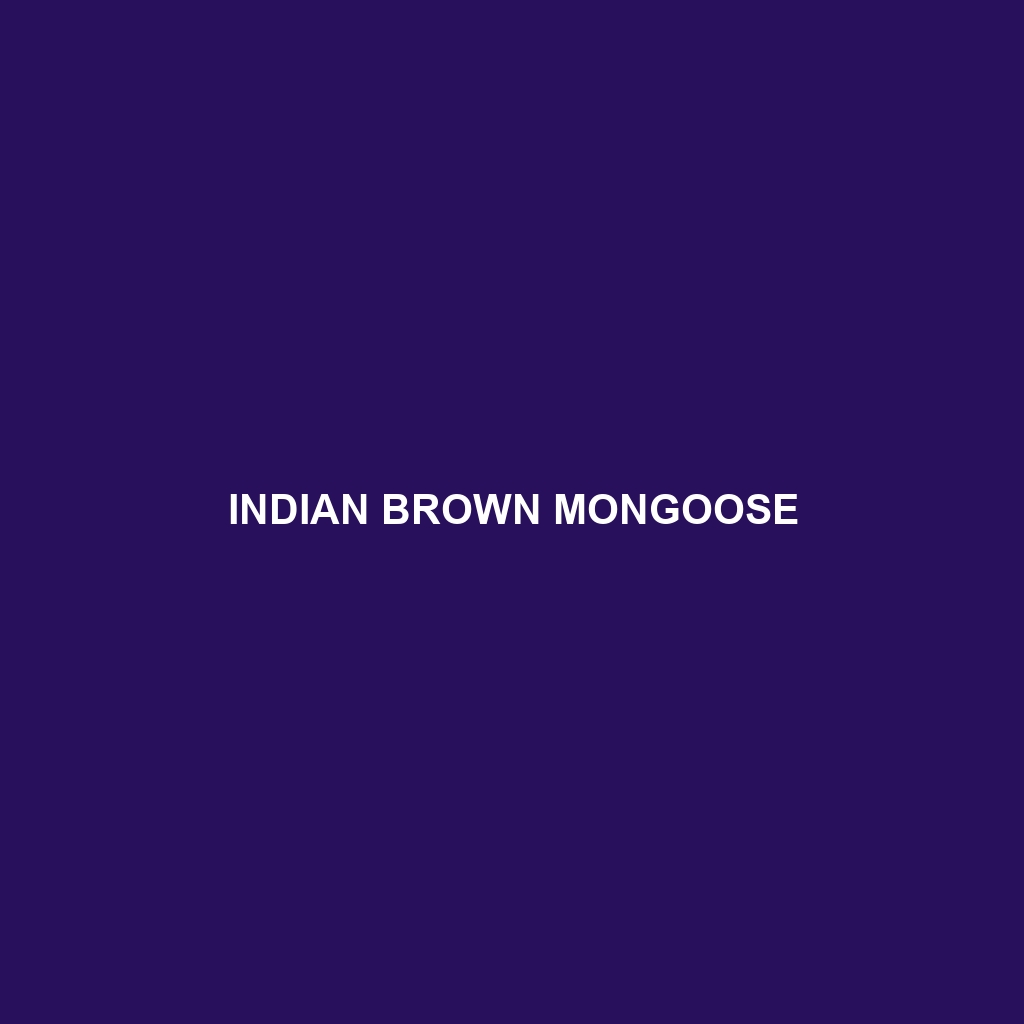Species Description: Indian Gray Mongoose
Common Name: Indian Gray Mongoose
Scientific Name: Herpestes edwardsii
Habitat
The Indian Gray Mongoose is primarily found across the Indian subcontinent, including countries such as India, Nepal, Sri Lanka, and parts of Bangladesh. These adaptable mammals inhabit a variety of environments ranging from forests and grasslands to urban areas. They are commonly seen in scrublands and agricultural fields, showcasing their ability to thrive in diverse habitats.
Physical Characteristics
Indian Gray Mongooses are medium-sized mammals, typically ranging from 24 to 30 inches in length, including their tail. They have a sleek, elongated body covered in soft gray-brown fur, which tends to be lighter on the underside. Their distinctive features include a pointed snout, small ears, and sharp claws designed for digging. The bushy tail is about the same length as their body, aiding in balance when navigating through their environment.
Behavior
These mongooses are primarily diurnal, engaging in most of their activities during the day. They are known for their social structure, often living in small groups or familial units. Indian Gray Mongooses are curious and intelligent, frequently exhibiting playful behaviors. They are also skilled climbers and swimmers, showcasing their adaptability. Notably, they have a reputation for hunting and killing snakes, which has led to their cultural significance in various regions.
Diet
The diet of the Indian Gray Mongoose is omnivorous, comprising a variety of food sources. They primarily feed on insects, small mammals, birds, and reptiles, including snakes. They are known for their skill in catching venomous snakes, highlighting their importance as natural pest controllers. Additionally, they consume fruits and carrion, demonstrating their opportunistic feeding habits.
Reproduction
Indian Gray Mongooses typically breed during the warmer months, with a gestation period of approximately 60 to 65 days. Females usually give birth to a litter ranging from one to four offspring. The young are weaned after a few weeks and start to accompany their mothers shortly after. Parental care is significant, with both parents often participating in raising the young.
Conservation Status
The Indian Gray Mongoose is currently classified as Least Concern by the IUCN Red List. However, habitat loss and hunting in certain regions can pose threats. Conservation efforts are essential to ensure that their populations remain stable, particularly in areas where they face human encroachment.
Interesting Facts
- Indian Gray Mongooses are famous for their ability to resist snake venom, allowing them to hunt highly venomous species like cobras.
- They have been featured in folklore and mythology, particularly in stories emphasizing their fearless nature.
- Their lively and playful disposition often makes them a favorite among wildlife enthusiasts.
Role in Ecosystem
As opportunistic feeders, Indian Gray Mongooses play a crucial role in controlling populations of pests, including rodents and insects. Their predation on snakes also helps maintain ecological balance by regulating snake populations. In addition, their presence in various habitats contributes to the health and diversity of their ecosystems, making them an essential component of their natural environments.
